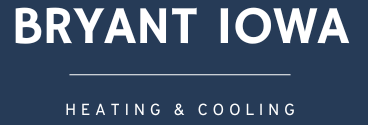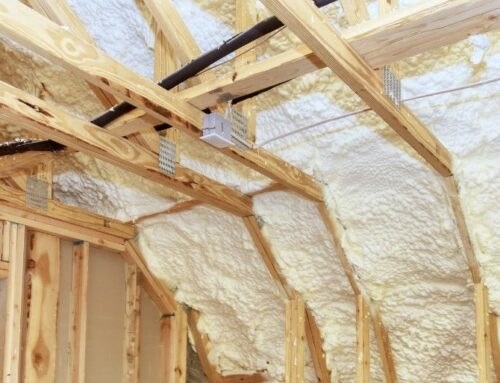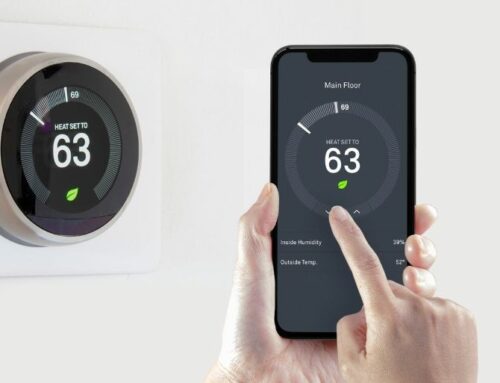As the leaves start to fall and the air turns crisp, many homeowners face the task of switching from Cooling to Heating in their HVAC systems. This guide aims to walk you through the seamless transition of your HVAC system as the seasons change, ensuring you’re well-prepared for the colder months ahead.
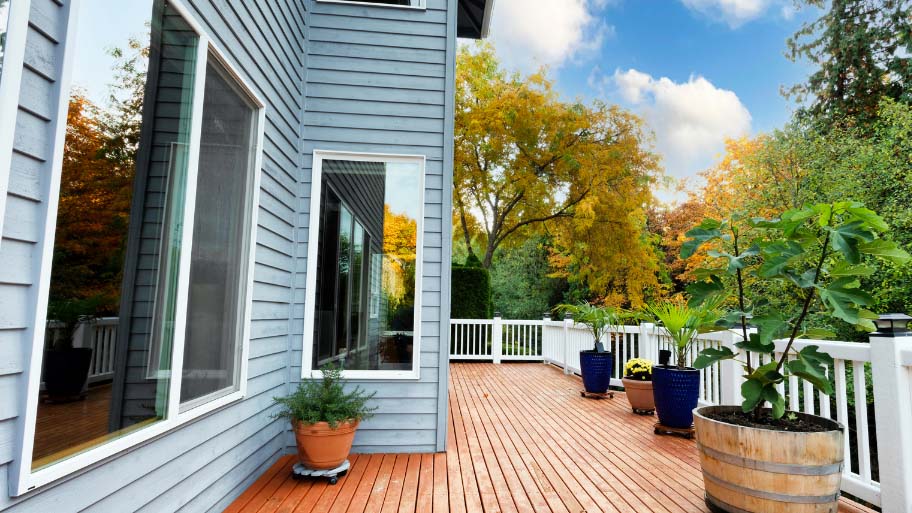
Why Seasonal HVAC Transition is Crucial
Making the switch isn’t just about comfort; it’s also about efficiency and longevity. A smooth transition can save you money on energy bills and extend the life of your HVAC system, making it a crucial step as you prepare for the winter season.
Did you know?
According to the U.S. Energy Information Administration, 88% of U.S. households rely on air conditioning. This underscores the importance of mastering the seasonal transition to ensure optimal performance and comfort.
Importance of Seasonal HVAC Transition
The transition from cooling to heating as the seasons change is more than just a routine task; it’s an essential practice that has far-reaching implications for your home and lifestyle. In fact, it’s a bit like changing your wardrobe; you wouldn’t wear a winter coat in the summer, so why keep your HVAC system in cooling mode when the temperatures drop?
This transition is pivotal for two main reasons: it significantly impacts your energy bills and plays a crucial role in extending the lifespan of your HVAC system.
Reason #1. Energy Efficiency
Optimizing the transition of your HVAC system from cooling to heating can lead to substantial energy savings, which in turn can lower your monthly utility expenses.
How Energy Efficiency Impacts Your Bills
An HVAC system that isn’t transitioned properly can consume more energy than necessary. According to the U.S. Department of Energy, inefficient space heating and cooling systems can lead to increased energy consumption, higher costs for repairs, and decreased system reliability.
For instance, a poorly maintained air conditioner running in the fall can use up to 20% more energy compared to a well-maintained unit. This inefficiency translates directly into higher energy bills, making it crucial to manage the transition effectively. Think of it as a leaky faucet; every drop counts, and before you know it, you’ve wasted a lot of water—or in this case, energy.
Reason #2. System Longevity
A well-executed seasonal transition can also extend the lifespan of your HVAC system.
The Correlation Between Maintenance and System Lifespan
Conducting routine inspections as you shift from cooling to heating can catch potential problems early, averting expensive fixes down the line. For instance, swapping out or cleaning filters when you make the switch can alleviate strain on your HVAC system, prolonging its effective lifespan. Think of it as akin to regular tune-ups for your car, which help maintain engine efficiency over time.
What the data reveals...
Per data from the U.S. Energy Information Association, the energy expenditure for heating and cooling in a typical American household ranges from 50% to 52%. This data highlights the critical role of a well-managed seasonal HVAC transition in controlling your energy expenses.
Lesser-Known Fact
Many people are unaware that the seasonal transition also impacts indoor air quality. For instance, a heating system that hasn’t been cleaned can circulate dust and allergens throughout your home, affecting the health of the residents. It’s akin to not cleaning your home for months; the dust accumulates, and suddenly you’re sneezing more often.
Preparing Your Cooling System for Shutdown
As the seasons change, it’s crucial to properly prepare your cooling system for shutdown to ensure its longevity and efficiency. Think of it as putting your summer clothes into storage; you want them to be clean and in good condition for the next warm season. Just like you wouldn’t store a dirty swimsuit, you shouldn’t leave your cooling system dirty when turning it off for the season.
Step 1. Cleaning
Before shutting down your cooling system, it’s essential to give it a thorough cleaning. This is the time to remove any accumulated dust, debris, or foliage that could affect its performance.
Types of Cleaning Required
Cleaning involves multiple components, such as filters and coils. Dirty filters can restrict airflow and reduce efficiency, while dirty coils can impede heat transfer. It’s advisable to replace or clean the filters and to clean the evaporator and condenser coils to ensure optimal performance. Consider using a specialized coil cleaner for a deep clean that can improve system efficiency.
Step 2. Maintenance Checks
A well-maintained system is less likely to encounter issues when you switch back to cooling mode in the spring. It’s like a car; you wouldn’t park it for months without checking the oil and tires.
What to Inspect Before Shutdown
Key areas to inspect include the thermostat settings, electrical connections, and lubrication of moving parts. Make sure the thermostat is set to “off” or “heat,” ensure all electrical connections are tight, and lubricate any moving parts to prevent wear and tear. Also, check for any signs of wear on belts and pulleys and replace them if necessary.
Step 3. Proper Shutdown Steps
Turning off your cooling system involves more than just flipping a switch. It’s a process that requires attention to detail to ensure the system is ready for its winter hibernation.
What to Inspect Before Shutdown
Average Lifespan of a Cooling System
The average lifespan of a cooling system ranges from 15 to 20 years, depending on maintenance and usage. Proper shutdown procedures can contribute to reaching the higher end of this lifespan. Consistent annual maintenance can add years to your system’s life.
Here’s a lesser-known fact: Many people don’t realize the risks associated with not properly shutting down their cooling system. Failing to do so can lead to issues like mold growth, which can be detrimental to both the system and your home’s air quality. It’s akin to leaving food out; it might look fine for a while, but eventually, it will spoil.
Inspecting and Tuning Your Heating System
As you bid farewell to the cooling season, it’s time to welcome your heating system back into action. Think of it as waking up a bear from hibernation; you want to make sure it’s ready to face the world—or in this case, the winter. Proper inspection and tuning are like pre-winter health check-ups for your heating system.
Step 1. Initial Inspection
Before you fire up your heating system, a thorough inspection is in order.
What to Look for During Your Initial Inspection
Check for any visible issues like loose wires, strange noises, or signs of wear and tear. Inspect the furnace filter, as a clogged filter can reduce efficiency. Also, examine the vents and ductwork for any blockages that could restrict airflow. Don’t forget to check the pilot light if you have a gas furnace; it should be a clear blue flame.
Step 2. Cleaning and Replacements
Your heating system will likely need some cleaning and possibly some part replacements.
When to Clean vs. When to Replace Parts
Filters should generally be replaced, but components like the blower assembly can often be cleaned. If you notice any parts that are corroded or significantly worn, it’s better to replace them now rather than face a breakdown in the middle of winter. Keep an eye out for frayed belts or any signs of rust as well.
Step 3. Test Run
Before fully committing to heating mode, a test run is advisable.
How to Conduct a Safe Test Run
Begin by adjusting the thermostat to a level that will activate the heating system. Pay attention to any odd noises and check if the heat is being distributed uniformly throughout your home. Should you encounter any irregularities, consider scheduling a professional maintenance check. Catching issues early is preferable to facing them in the coldest part of the year.
Efficient Heating Systems Saves Energy
Improving the efficiency of your heating system can lead to significant energy savings. According to the U.S. Department of Energy, a well-maintained furnace can operate at an efficiency level up to 95%, compared to 70% for a neglected system. Proper maintenance and timely inspections can make a substantial difference in your energy bills.
Here’s a lesser-known fact for you: The thermostat’s role in heating efficiency is often underestimated. Utilizing a programmable thermostat allows you to customize temperature settings for various times, enhancing energy conservation and possibly reducing your annual energy bill by a considerable amount. Advanced smart thermostats can adapt to your daily routines and make automatic adjustments.
The Transition Process
Switching from cooling to heating is like a relay race; timing and coordination are key. You want to pass the baton smoothly to ensure a seamless transition and optimal performance. It’s a process that requires careful planning and execution, much like preparing a garden for different seasons.
#1. Timing
The “when” is just as important as the “how” in the transition process.
Best Times to Make the Transition
Generally, the best time to make the switch is during the fall, before the first frost hits. This gives you ample time to prepare your systems and ensure they’re in top shape for the colder months. Waiting too long could mean higher energy bills or even a system breakdown.
#2. Professional Inspection
While DIY checks are useful, nothing beats the expertise of a professional.
Why a Professional Inspection is Advisable
Professionals have the expertise to spot problems that might go unnoticed by someone without training. They can conduct specific assessments and fine-tune your system for optimal performance. It’s akin to getting a thorough check-up from a doctor before embarking on a strenuous physical activity; it provides an added level of confidence.
#3. Energy-Saving Tips
A smooth transition isn’t just about switching modes; it’s also about optimizing energy use.
Quick Hacks for Saving Energy During the Transition
Weatherstripping
Making these small changes can have a big impact. For instance, weatherstripping alone can reduce energy costs by up to 20%.
Here’s a less common fact for you: Believe it or not, keeping an eye on the weather forecast can help you time your transition effectively. Knowing when a cold front is approaching can give you the lead time needed to prepare your heating system, much like how farmers rely on weather forecasts for planting and harvesting.
Common Mistakes to Avoid
Switching from cooling to heating might seem straightforward, but there are pitfalls that can lead to inefficiency and even system damage. It’s like cooking a complex dish; one wrong move can spoil the entire meal. These mistakes can have both immediate and long-term consequences, affecting not just your comfort but also your wallet.
Mistake #1. Neglecting Maintenance
Maintenance isn’t just a one-time task; it’s an ongoing responsibility.
The Long-Term Costs of Neglect
Ignoring regular maintenance can lead to a gradual decline in system efficiency and eventually result in costly repairs or replacements. It’s like skipping dental check-ups; small issues can turn into major problems down the line. Over time, this neglect can accumulate, leading to a system that’s both inefficient and unsafe.
Mistake #2. Incorrect Timing
Timing isn’t just about the calendar; it’s about being proactive.
Why Timing Matters
Switching too late or too early can result in higher energy bills and put unnecessary strain on your HVAC system. It’s akin to planting a garden; timing is crucial for optimal growth and yield. Incorrect timing can also lead to uneven heating or cooling, making your home uncomfortable.
Mistake #3. DIY Over Professional Help
While DIY solutions can be tempting, they’re not always the best route.
When DIY is Not Advisable
Certain tasks require specialized knowledge and tools that only professionals possess. Attempting to fix complex issues yourself can lead to further damage and void your warranty. It’s like trying to fix a complicated piece of machinery without the right tools; you’re more likely to make things worse.
These Mistakes Will Cost You
According to a study by Smart Service, common mistakes like neglecting maintenance or incorrect timing can lead to a decrease in system performance and increase your annual energy costs by up to 25%. Being aware of these pitfalls can save you a significant amount in the long run.
What many don’t realize: What many don’t realize is that making these common mistakes can also affect your warranty. Some warranties become void if the system hasn’t been professionally maintained, leaving you without a safety net in case of system failure.
Your Seasonal HVAC Game Plan: Final Thoughts
Switching from cooling to heating is more than just flipping a switch; it’s a calculated process that impacts your comfort, energy bills, and the longevity of your HVAC system. Just like a chef meticulously plans each step of a recipe, you too should approach this seasonal transition with care and attention to detail.
Summary of Key Takeaways
To ensure a smooth transition, remember these actionable steps:
By following these guidelines, you’re not just preparing for a season; you’re investing in the long-term health and efficiency of your HVAC system.
FAQs: Navigating Your HVAC Transition
Your Go-To Services for a Seamless Transition
Considering a seamless transition for your HVAC system this season? Look no further! At Bryant Iowa Heating and Cooling, we provide a comprehensive suite of services designed just for you:
Ready to take the hassle out of your seasonal HVAC transition? Speak to one of our experts now and let’s get started!
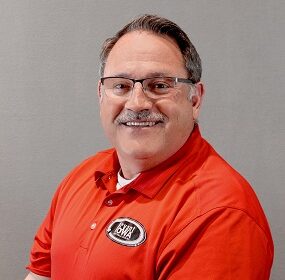
About the Author
For over 30 years, DuWayne McDaniel has been the trusted name behind Bryant Iowa Heating and Cooling in Ankeny, IA. With a Masters in HVAC and Hydronics, NATE certification, and EPA licensing, DuWayne brings unparalleled expertise to residential and commercial HVAC services. His commitment to 100% customer satisfaction has earned him the BBB Torch Award and made Bryant Iowa a Bryant Factory Authorized Dealer. DuWayne’s deep understanding of HVAC needs ensures year-round comfort for homes and businesses alike.
